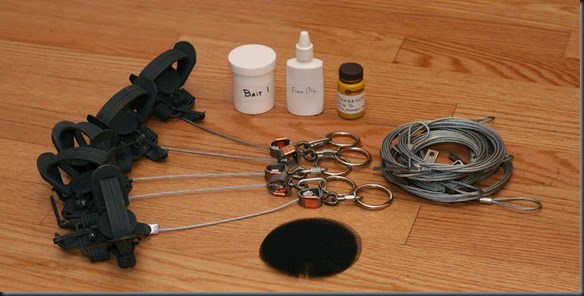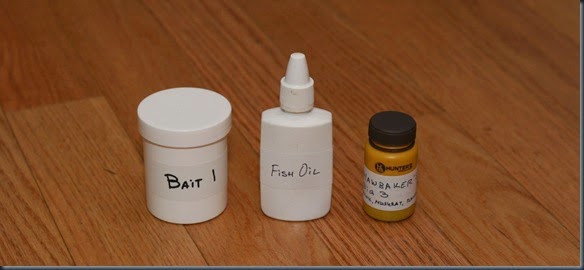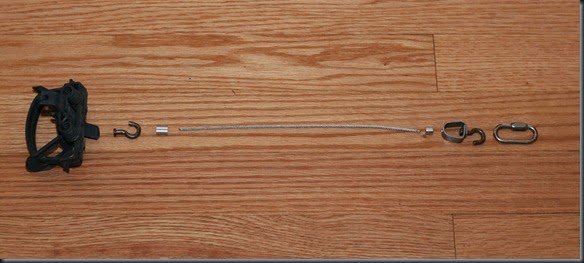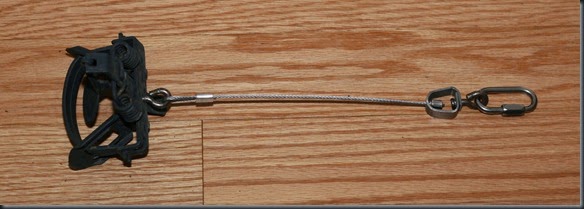As I’ve been saying all along in my posts on trapping, this year, and hopefully going forward, I’ll try to play around with the idea of creating a trapping set up that is backpack portable. By that I mean, a set up with which a person can travel over long distances in the wilderness while trapping and possibly hunting and fishing as well. What I need to achieve is a lightweight trapping kit.
Naturally, trapping does not lend itself well to this idea. Trapping requires a lot of heavy equipment, and as a result it is often done from a more established base of operations where gear can be transported by means other than human power, or near populated areas where access by car is easy. Having a trapping kit that can be carried along with all of your other overnight gear is a great challenge. And let me be clear, here I am not talking about bringing some wire as an emergency trapping kit. I am talking about a kit with which you can legally trap long term. I’m still not sure it can be done, or how successful the result will be, but here is my attempt:
Before I get into the details of the gear you see in the picture above, let me say a bit about the theory here.
First, why foothold traps? Well, other than the fact that I like them, I think they are the most effective trap for the weight that I am allowed to use in my area. Technically, snares are a lighter and a very productive option, but they are illegal in my state, and they do get damaged quite often when they catch an animal, making them hard to maintain over longer periods. The other main option, body grip traps (Conibears) are actually much heavier considering what they can actually trap. As an example, let’s say that a #1 foothold trap and a 110 body grip trap weigh about the same (unmodified), about 15 oz each. So far they are the same. However, the #1 foothold trap is rated to take muskrat, mink, opossum, and raccoon; the 110 body grip trap is rated to take only muskrat and mink. For opossum and raccoon, you have to move up to 160 or 220, which is heavier. Sure, each type of trap can occasionally catch a larger animal, but they are not rated for it. So, for the same weight a foothold trap will give me a much larger range of animals I can trap. It’s not always easier to use, but it’s more productive for the weight.
Second, since I am using foothold traps, I have four different target groups of animals, for which I would use different set ups:
- Squirrel
- Mink, muskrat, opossum, and raccoon
- Fox, coyote, and fisher
- Beaver and otter
For each category I use a different size trap. So, when deciding on a portable trapping kit, I had to prioritize which animals to target. Which type of trap would give me the biggest bang for the buck. I decided that my best chance for productive trapping was to go after the second category, i.e. mink, muskrat, opossum, and raccoon. For all four species I use a #1 foothold trap. Not only are the animals easier to trap, but the traps themselves are relatively small and light. Squirrel is relatively abundant, and I do have a lightweight way of trapping them, although there aren’t always regulations that allow for squirrel trapping. As such, I will leave it for another post. Those traps can easily be added to this kit to supplement it. Fox and coyote are very hard to trap, especially when you have limited time. Most coyote trappers I know have to leave the traps set for at least a few days before they have a chance to trap one. As far as beaver, while it is a big return on investment, the traps are just too heavy. Bringing several 330s or #4 foot holds would just be prohibitively heavy. So, for this kit I focused on using #1 foothold traps in order to target mink, muskrat, opossum, and raccoon.
Leaving the theory aside, let me give you the run down on the gear in the above picture and the corresponding weights:
| Item | Model | Weight |
| Trap (x5) | Oneida Victor #1 (modified) | 10.8 oz (54.0 oz for 5 traps) |
| Lure (full) | Hawbaker’s Big 3 | 1.0 oz |
| Bait Canister | Plastic screw top jar | 0.8 oz |
| Fish Oil (full) | Commercial fish oil | 2.4 oz |
| Trap Covers (x5) | Fiberglass pan covers | 0.1 oz for 5 |
| Drown line (x5) | 10’ 3/32” drown lines | 3.4 oz (17 oz for 5) |
The total weight for the kit, including the drown lines is 4lb 11.3oz. If you do not need the drown lines, then the weight drops down to 3lb 10.3oz. In some instances the drown lines will be worth the extra weight, in other instances they will not. I’ve included them here because I think they are a good idea. If you are trapping away from water, then you would not need them.
The lure I use (or at least will stick to this year) is Hawbaker’s Big 3 Lure. To me it seems heavy on muskrat musk, which if fine by me. I keep it in a canister designed for deer lure. They sell them empty in packs of three at most hunting supply stores. It is a lighter and more durable option that the glass bottle the lure originally comes in. I also like Blackie's Blend Moneymaker Lure, but it’s more liquid than Hawbaker’s so I find it harder to apply. Both lures are designed to work on mink, muskrat, and raccoon, and everything works on opossum. I also carry a nasal spray bottle filled with fish oil. I use it as a trailing lure. Ideally I would want more of it, but weight reduction was the name of the game. I usually carry several baits, but this year I will stick with raw chicken or other meat just to simplify things. I’ll see if it works.
The only other item I may consider carrying is a jar of antifreeze. I’ll see if I can get away without it. I plan on using the same type jar as the bait jar. Filled with antifreeze it weighs 4.0 oz.
The traps themselves are a modified version of the same model Oneida Victor #1 foothold traps you’ve seen in previous posts. I’ve put a night latch trigger on all of them, and they have been dipped, much like on all my other traps. The main difference is the chain. In fact, there is no chain at all. It has been replaced by cable. The cable I chose is 3/32” aircraft aluminum cable. It has a breaking strength of 920lb, which is higher than most chains, so I hope it works out okay. I imagine I would have to change out the cable from time to time, but I think it’s worth it.
Step one is to remove the chain as with a normal modification, and relocate the J-hook to the center of the trap. Then, align all the parts:
The components I used to put the trap together are:
- Trap
- J-hook
- Aluminum double ferrule
- A length of 3/32” aluminum cable. I used about eight inches.
- Aluminum single ferrule
- Swivel with one of the J-hooks removed
- Quick release link
As with my previous posts related to trapping gear, I’ve provided links to the items from Fur Harvester’s Trading Post, so it’s easier to get everything together, and because I like the place.
Then, just put everything together. Place the J-hook on the trap and close it; Thread the cable through the J-hook and close the loop using the double ferrule. I just pounded it with a hammer until it was secure. Then thread the other end of the cable into the opening of the swivel, and secure it with the single ferule, which will act as a stop. Finally, close the swivel J-hook around the quick link attachment.
All that’s left to do it add your tags if required by your state. The modification is pretty easy to do, and drops the weight of each trap to 10.8 oz.
Obviously this is a very basic kit. It is missing many things, in particular tools. As you can see, there are no stakes. In the top picture you see large metal rings attached to the quick links. They are there to be used with wooden stakes when drown lines are not a good option. Of course that means I have to make my stakes on the spot. It’s not too difficult with only five traps, but it’s not the norm. I also don’t have any digging tool or hammer. That is also a sacrifice made in the interest of reducing weight. A typical trapper’s tool will weight nearly 5lb, which is prohibitive. Considering all of that, a hatchet might be a good idea to carry when trapping with this set up, although you can certainly do without it.
So, five modified traps (#1 Oneida Victor), five drown lines (10’ 3/32” cable with locks), five trap covers (fiberglass), a bottle of lure (Hawbaker’s Big 3), a bottle of trailing lure (fish oil), and a bait jar. Less than five pounds of gear that can be carried in a pack with the rest of your kit. Will it work? I don’t know. The challenge here is not only the reduced gear, but also the manner in which the trapping is to be done. This assumes a scenario where you would backpack over certain distance to a location, set up traps, leave them overnight or possible for two or three days while you camp in the area, and then pack up everything again and get going. This truncated time table is not a trapper’s friend. It is best to leave the traps out for longer periods, but this method will not allow for it. For me it’s an experiment to see what’s possible.







No comments:
Post a Comment